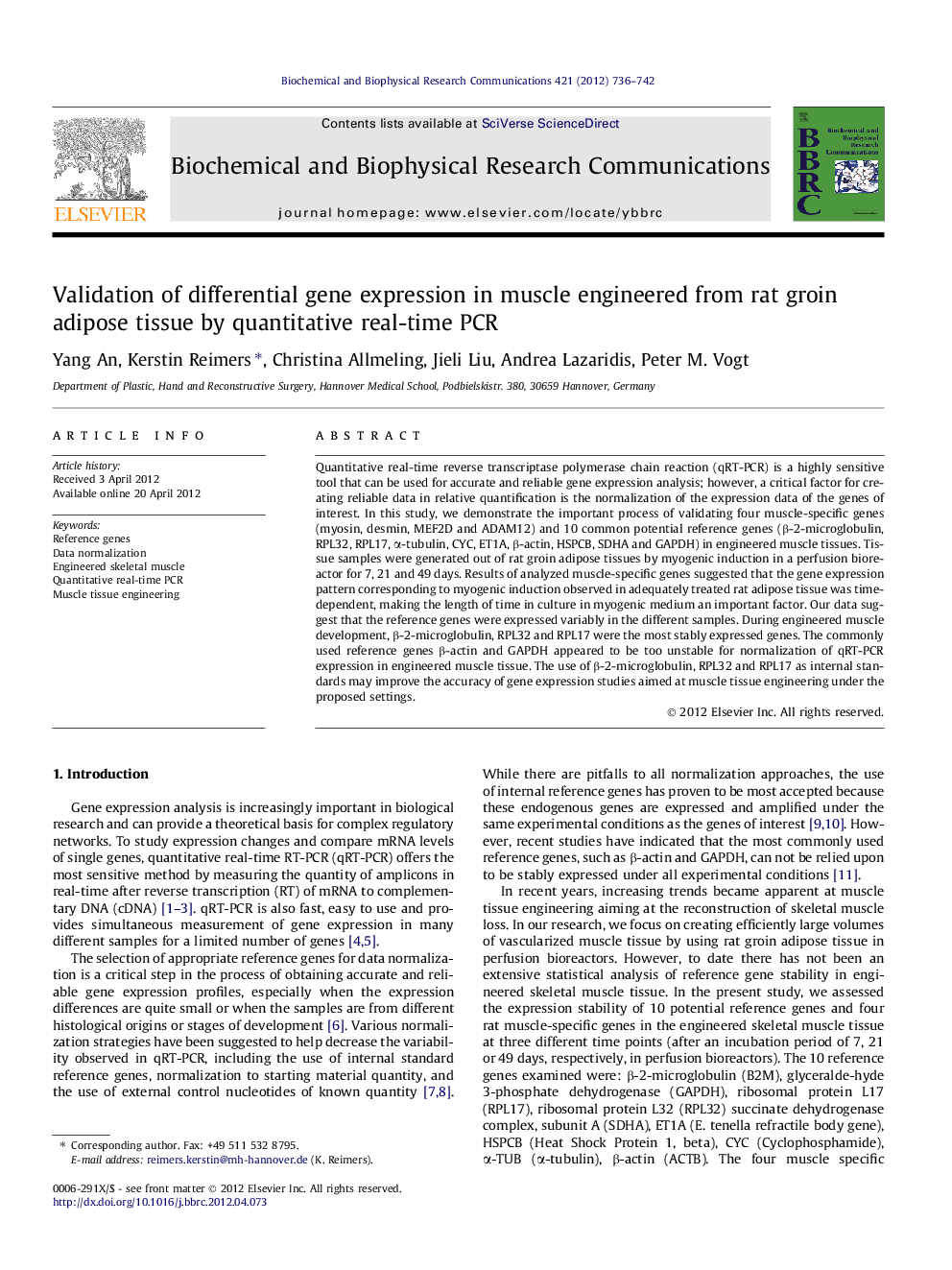| Article ID | Journal | Published Year | Pages | File Type |
|---|---|---|---|---|
| 1929765 | Biochemical and Biophysical Research Communications | 2012 | 7 Pages |
Quantitative real-time reverse transcriptase polymerase chain reaction (qRT-PCR) is a highly sensitive tool that can be used for accurate and reliable gene expression analysis; however, a critical factor for creating reliable data in relative quantification is the normalization of the expression data of the genes of interest. In this study, we demonstrate the important process of validating four muscle-specific genes (myosin, desmin, MEF2D and ADAM12) and 10 common potential reference genes (β-2-microglobulin, RPL32, RPL17, α-tubulin, CYC, ET1A, β-actin, HSPCB, SDHA and GAPDH) in engineered muscle tissues. Tissue samples were generated out of rat groin adipose tissues by myogenic induction in a perfusion bioreactor for 7, 21 and 49 days. Results of analyzed muscle-specific genes suggested that the gene expression pattern corresponding to myogenic induction observed in adequately treated rat adipose tissue was time-dependent, making the length of time in culture in myogenic medium an important factor. Our data suggest that the reference genes were expressed variably in the different samples. During engineered muscle development, β-2-microglobulin, RPL32 and RPL17 were the most stably expressed genes. The commonly used reference genes β-actin and GAPDH appeared to be too unstable for normalization of qRT-PCR expression in engineered muscle tissue. The use of β-2-microglobulin, RPL32 and RPL17 as internal standards may improve the accuracy of gene expression studies aimed at muscle tissue engineering under the proposed settings.
► Myogenic transdifferentiation of fat tissue was induced in a perfusion bioreactor. ► β-2-Microglobulin, RPL32 and RPL17 were most stable in gene expression analysis. ► Commonly used references β-actin and GAPDH were not suited under the chosen settings. ► Transdifferentiation was shown by muscle-specific myosin, desmin, MEF2D and ADAM12. ► Gene regulation was shown to depend on differentiation time.
